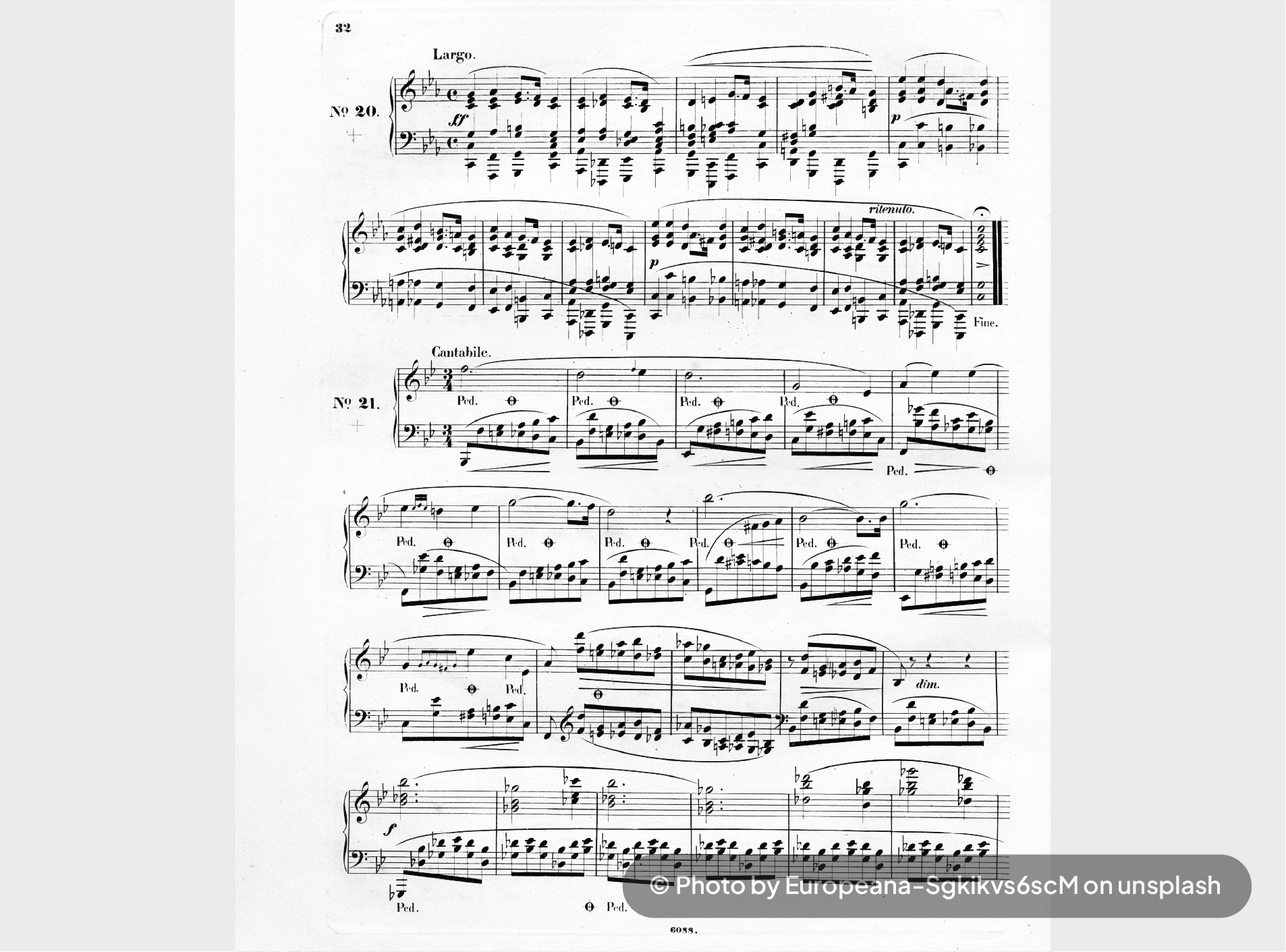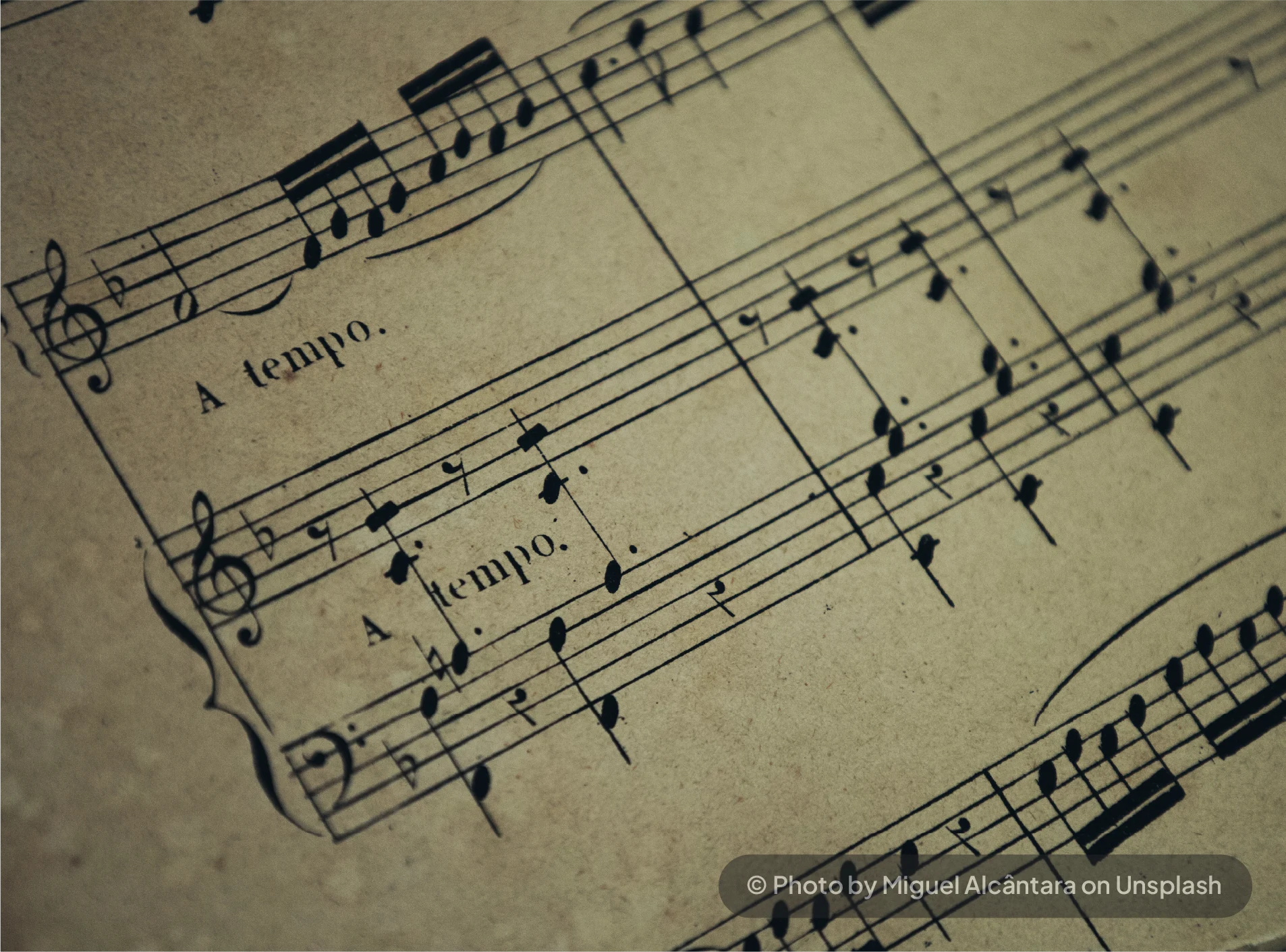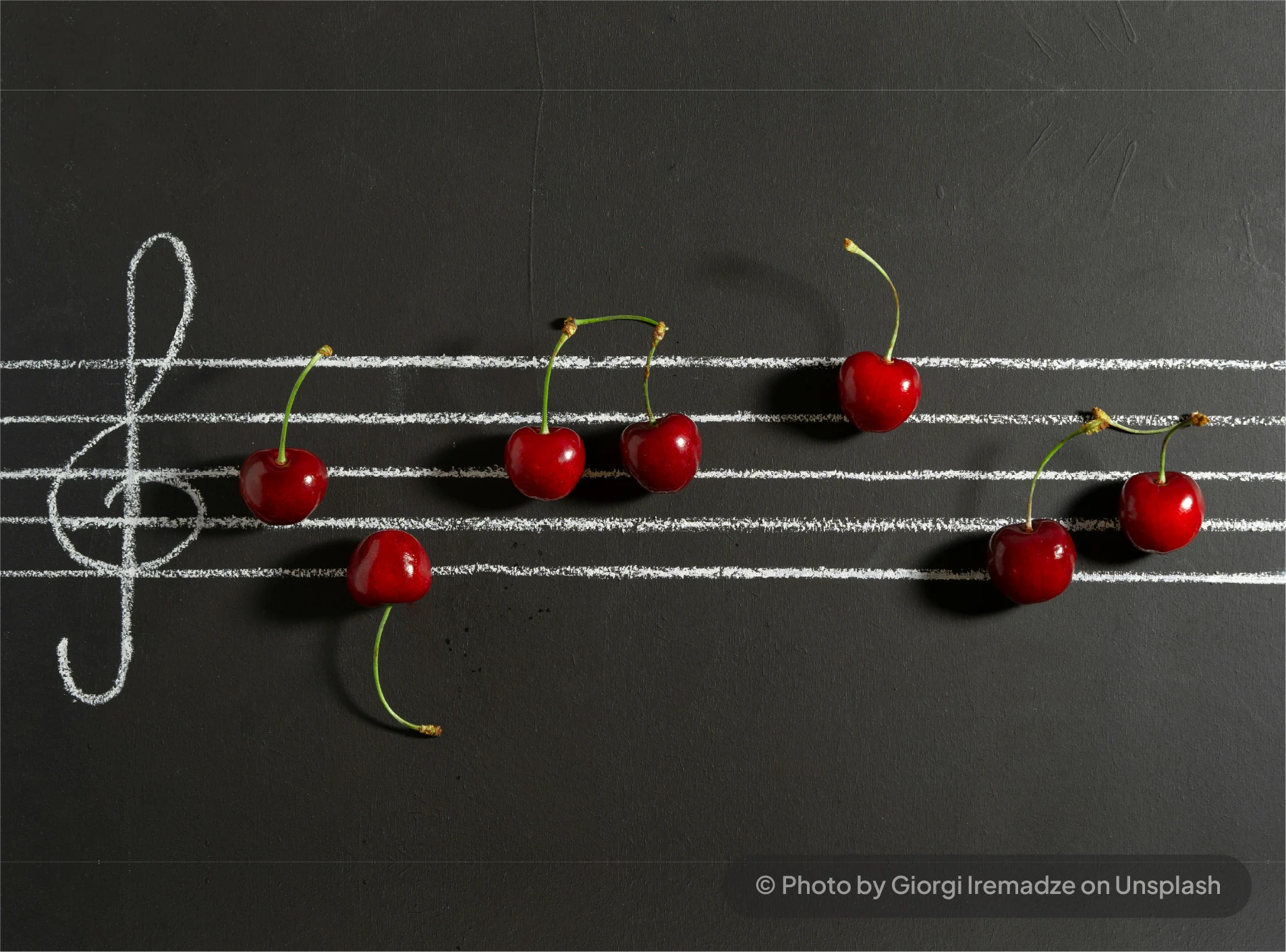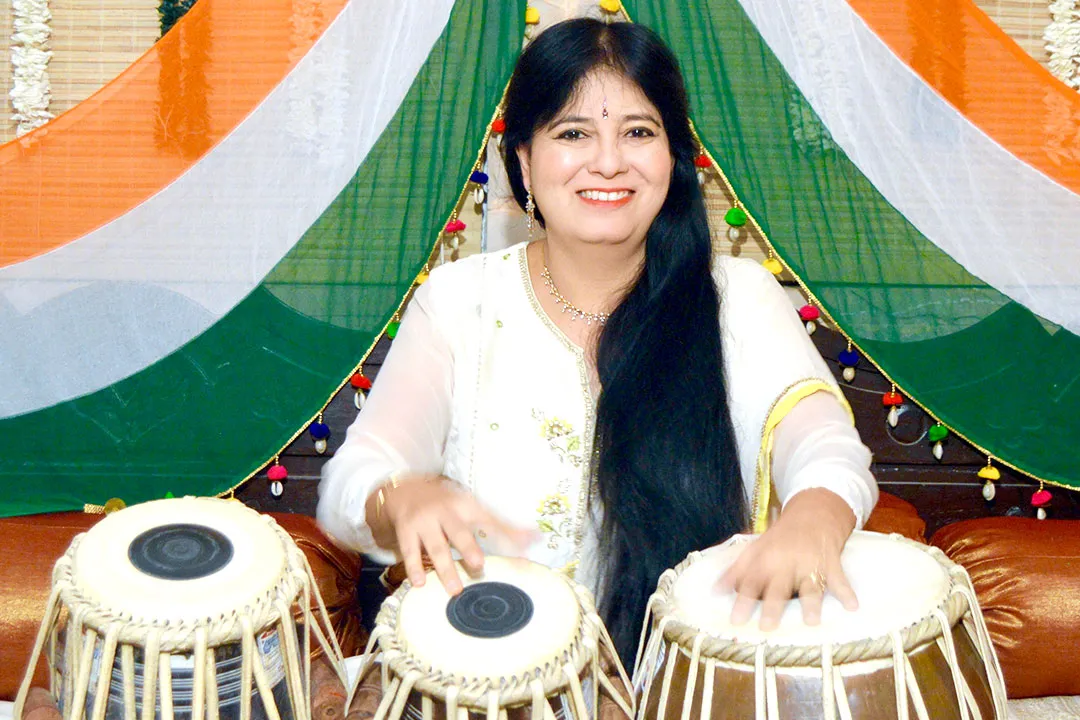What is Harmony in Music? Get Meaning of Harmony with Examples
Harmony in music is when different notes are played or sung together to create a richer, fuller sound. A simple way to experience harmony is by listening to the ending of Do-Re-Mi from The Sound of Music. When one person holds the note "Doe" and others sing "a deer, a female deer," you hear how their voices blend. Then another person picks up "Ray" and stays on it while others complete "a drop of golden sun." This layering of different notes creates harmony, making the music sound bigger and more colorful.
Types of Harmony in Music
There are three common types of harmony in music include -
1. Diatonic Harmony
This type of harmony uses notes that belong to the key of the piece. It sounds natural and smooth because it follows the major or minor scale of the song.
Most Western classical and pop songs use diatonic harmony, like Twinkle, Twinkle, Little Star, which follows a simple major scale.
2. Chromatic Harmony
This harmony includes notes outside the main key, creating a richer and more emotional sound. It often appears in more complex music.
Chopin’s Nocturnes use chromatic harmony to add depth and expressiveness.
3. Dissonant Harmony
Dissonant harmony creates tension by using clashing notes that sound unstable. The tension usually resolves into a more pleasant sound.
In The Rite of Spring by Stravinsky, dissonant harmony creates a dramatic and unsettling effect.
Each type of harmony gives music a unique feel, from simple and sweet to dramatic and intense.
How is Harmony Represented in Music
When it comes to musical instruments, chords are the main way harmony is created. A chord is a group of three or more notes played at the same time. The simplest chords, called triads, have three notes, like major or minor chords. More complex chords include extra notes, making the harmony richer and more colorful.
Harmony isn't just about a single chord—it’s also about how chords move from one to another. This movement, called chord progression, gives a song its direction and emotion. While the melody is the main tune, harmony works as a backdrop, making the music more expressive and engaging.
Musicians label chords based on the root note in the scale, and they often use Roman numerals to show where each chord fits in the song.
What are Chords?
If a single note is like a single rose, a chord, which is a group of notes played together, is like a bouquet of roses. It has more depth and variety. In "Let It Be" by The Beatles, the song is built on four simple chords (C, G, Am, F). These chords support the melody and make the song feel warm and emotional.

Another popular example of harmony in music is “Someone Like You” by Adele. The song is based on a repeating chord progression that makes it sound sad and reflective. Without the chords, the melody would feel empty, but the harmony fills it up with emotion.
Chord Progressions – How Music Moves
The strongest note in a chord is called the root—it’s like the base of a flower bouquet that holds everything together. In a C Major chord, the root is C. When these root notes change, we call it a chord progression. A famous chord progression is the 1-5-6-4 progression (C-G-Am-F), which is used in countless songs like "Let It Be" (The Beatles), "With or Without You" (U2), and "No Woman No Cry" (Bob Marley).

Another simple progression is 1-5-1, where the music starts at a comfortable place, builds tension, and then resolves. Think of "Happy Birthday." When you sing "Happy birthday to you," it feels stable (chord 1). When you sing the name, it moves to a different chord, creating tension (chord 5). When you finish the line, it returns to a comfortable resolution (chord 1). That’s harmony creating a feeling of movement.
Tension and Release – The Emotional Power of Harmony
Harmony can create feelings of anticipation and resolution, just like a story has ups and downs. Some chords naturally create tension, making you feel like something is about to happen. Then, when the music moves to another chord, you feel a sense of release.
In "Somewhere Over the Rainbow", when the singer moves from "Some-wheeeere" to "over the rainbow," the first note holds tension, and the second note resolves it. The music sounds magical because of this play between tension and release.
Another example is Queen’s "We Are the Champions". The music builds up tension with the lyrics "And we’ll keep on fighting till the end…" Then, when the chorus lands on the words "We are the champions," the harmony resolves, giving a powerful and triumphant feeling.
Overtones – How Hidden Sounds Create Harmony
Just like mixing red and yellow makes orange, different musical notes vibrate together to create new sounds. Even when you play just one note on a piano or guitar, other notes in the background vibrate slightly. This is called the overtone series, and it’s what makes harmony possible.
A good example of this is "Hallelujah" by Leonard Cohen, especially in the a cappella version by Pentatonix. Even though no instruments are used, the way the singers harmonize makes it sound like more than just voices—it sounds full and orchestral.
The Circle of Fifths – A Tool for Understanding Harmony
Musicians use a tool called the circle of fifths to understand harmony and chord relationships. This helps in composing and improvising. A great example is "Canon in D" by Pachelbel. The song follows a predictable chord pattern based on the circle of fifths, making it one of the most satisfying harmonies in music.
Another modern example is "Shape of You" by Ed Sheeran. The song loops the same four chords, but because of how the harmony is arranged, it never feels boring.
How the Circle of Fifths Helps Create Harmony
The Circle of Fifths is a tool musicians use to understand how different chords and keys are related. It helps in creating smooth-sounding chord progressions and harmonies. The circle is built by arranging all 12 notes of music in a way that each step moves five notes (a fifth) higher than the last.
For example, if you start on C, the next note is G (a fifth above C). Then comes D, then A, and so on, forming a complete circle. This is useful because the chords that are next to each other in the circle sound naturally good together.
A great example of how the Circle of Fifths creates harmony is in "Let It Be" by The Beatles. The song follows a chord progression of C - G - Am - F. If you look at the Circle of Fifths, you’ll see that C and G are right next to each other, making the transition between these chords feel smooth and natural.
Another example is "Canon in D" by Pachelbel. The entire piece follows a chord progression that moves through the Circle of Fifths, creating a feeling of balance and flow. This is why it sounds so pleasing to the ear.
The Circle of Fifths also helps musicians modulate (change keys) smoothly. A song might start in C Major and move to G Major because those keys are close in the circle. This kind of key change keeps the music interesting without feeling abrupt. A good example is "Bohemian Rhapsody" by Queen, where the song shifts through different keys but still sounds connected because it follows the relationships found in the Circle of Fifths.
Consonance and Dissonance in Harmony
Harmony can create two different kinds of feelings: consonance and dissonance.
1. Consonance – When Notes Sound Pleasant Together
Consonance happens when two or more notes blend together smoothly, creating a sound that feels stable and pleasing. These are the combinations that make music feel harmonious and peaceful.
A simple example is the C Major chord (C-E-G). If you play these three notes together, they sound warm and full because the vibrations of the notes complement each other.
Songs like "Imagine" by John Lennon use a lot of consonant harmonies. The chords move smoothly, and the harmony feels calm and dreamy. Another example is "Perfect" by Ed Sheeran, where the chords and harmonies create a romantic and soothing sound.
2. Dissonance – When Notes Clash for Tension
Dissonance happens when two or more notes create a sense of tension or unease. This doesn’t mean the notes are wrong—it just means they create a feeling of suspense or drama. This is important in music because it makes the resolution (when the tension is released) feel more satisfying.
A classic example is the opening of "Jaws" by John Williams. The two notes (E and F) are very close together and create a tense, scary feeling. Another example is in "Smells Like Teen Spirit" by Nirvana. The distorted guitar chords use dissonance to give the song its aggressive and powerful sound.
Dissonance is often followed by resolution, where the notes move back to consonance. A great example is in Beethoven’s "Moonlight Sonata." The opening has some tense, dissonant moments, but then it resolves into smoother, more peaceful harmonies.
In jazz and blues, dissonance is used a lot to create emotion. Songs like "Take Five" by Dave Brubeck and "Blue in Green" by Miles Davis have rich, unexpected harmonies that create a sense of depth and complexity.
Why Both Are Important
Music would be boring if it was only consonant and never had any tension. Likewise, if a song was all dissonance, it would sound chaotic. The best music balances both—creating moments of tension (dissonance) and then releasing them (consonance).
A perfect example of this is "We Are the Champions" by Queen. The verses build up tension with slightly dissonant chords, making the chorus feel even more powerful when it resolves.
Another great example is "Yesterday" by The Beatles. Some parts of the song feel slightly tense, but they always resolve in a way that sounds satisfying.
How Harmony Is Used in Music
 Harmony is created when different notes vibrate together. For example, the major scale, which you play using the white keys on a piano, has a bright and happy sound. The song "Twinkle, Twinkle, Little Star" is based on the major scale. If you hum the tune and then someone else plays chords underneath, the song instantly sounds richer.
Harmony is created when different notes vibrate together. For example, the major scale, which you play using the white keys on a piano, has a bright and happy sound. The song "Twinkle, Twinkle, Little Star" is based on the major scale. If you hum the tune and then someone else plays chords underneath, the song instantly sounds richer.
A different kind of harmony comes from the pentatonic scale, which is common in folk and blues music. In "Amazing Grace," the melody follows the pentatonic scale. If a choir sings the melody and adds harmonizing voices, the song feels deeper and more emotional. The way notes are spaced in a scale determines how the harmony will sound.
Thus, harmony plays a big role in shaping the mood of a piece, making music feel warm, dramatic, peaceful, or energetic. It helps bring the melody to life and makes a song truly complete.
How Harmony is Used in Music by Vocalists
The meaning of harmony in music doesn’t change when it shifts from keyboards to vocals. The keys are now replaced with different singers creating harmony through their voices.
Harmony in vocal music happens when singers sing different notes at the same time, creating a richer and fuller sound. Instead of all singers singing the same melody, some singers sing higher or lower notes that blend with the main tune. This makes the music more emotional and interesting.
1. Singing in Parallel Harmony
One of the most common ways vocalists use harmony is by singing in parallel harmony. This means that a second voice sings the same melody but at a different pitch. A good example is "Scarborough Fair" by Simon & Garfunkel. The two singers harmonize by singing at different pitches, making the song sound haunting and beautiful.
Another example is "Eleanor Rigby" by The Beatles. The backing vocals provide a parallel harmony that adds depth to the song.
2. Singing in Thirds and Sixths
Many harmonies in Western music use thirds and sixths, because these intervals sound especially smooth and pleasing to the ear. In The Beatles’ "Here Comes the Sun," the harmonies are built in thirds, creating a warm and uplifting feel.
Another example is "Bohemian Rhapsody" by Queen, where Freddie Mercury and the band use vocal harmonies in thirds and sixths to give the song its rich and layered sound.
3. Call and Response
In some songs, harmonies are created through a call and response technique. One singer sings a line, and the backup singers respond with harmony. This is common in gospel music. A great example is "I Will Follow Him" by Sister Act, where Whoopi Goldberg sings the main melody and the choir responds with beautiful harmonies.
4. Layering Harmonies for a Choral Effect
Some songs use multiple layers of vocal harmony to create a choir-like effect. In "Good Vibrations" by The Beach Boys, different vocal lines overlap and create complex harmonies.
Similarly, "Because" by The Beatles has rich three-part harmonies throughout the song, making it sound almost like a classical choral piece.
5. Using Dissonance for Tension
While most harmonies are meant to be smooth, sometimes singers use dissonant harmonies to create tension before resolving into a more pleasant sound. In "Somebody to Love" by Queen, the background vocals create moments of tension that make the final resolution even more powerful.
Another example is "The Sound of Silence" by Simon & Garfunkel, where the harmonies give the song an eerie, haunting quality.
Concluding - Harmony in Music
Harmony is what makes music sound full and emotional. Without it, songs would feel flat and plain. Whether it’s the layering of voices in "The Sound of Music", the emotional power of chord progressions in "Let It Be", or the use of tension and release in "We Are the Champions", harmony is everywhere in music. It’s what makes us feel joy, sadness, excitement, and peace when we listen to our favorite songs.
Harmony is just one aspect of music. There is much more to learning music for example rhythm, musical notations, singing styles, etc. If you are intrigued and want to learn about these in depth, explore online music classes.














